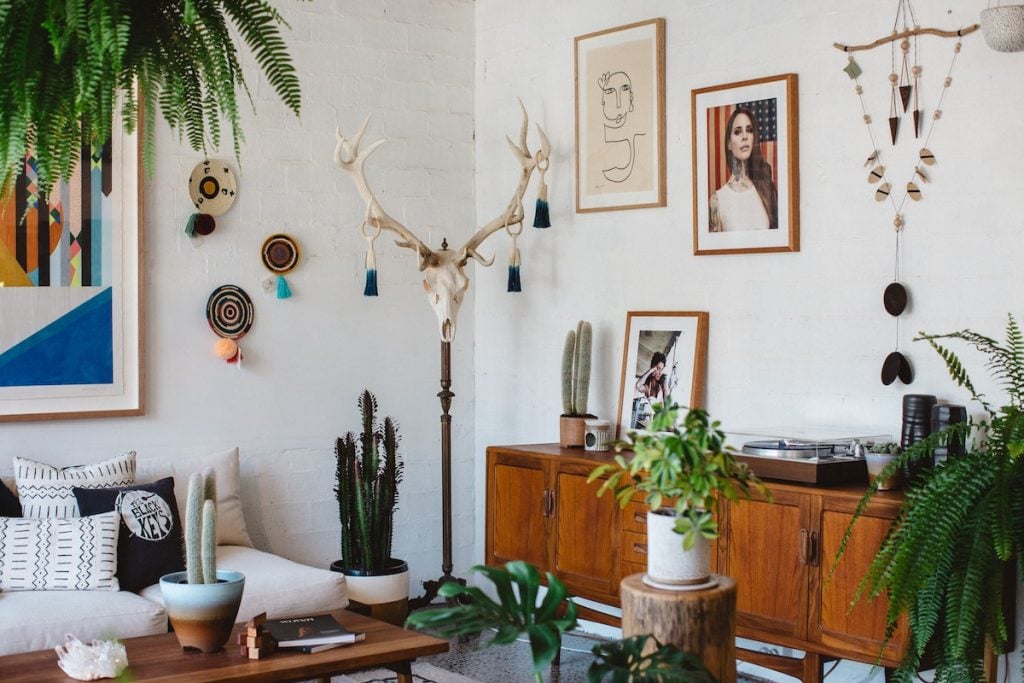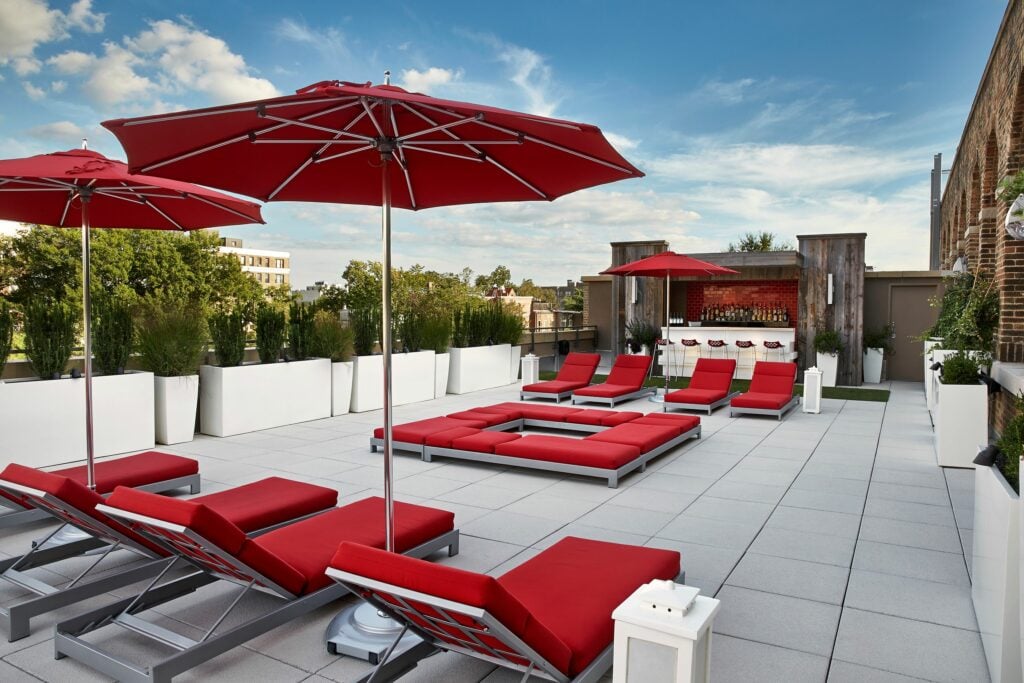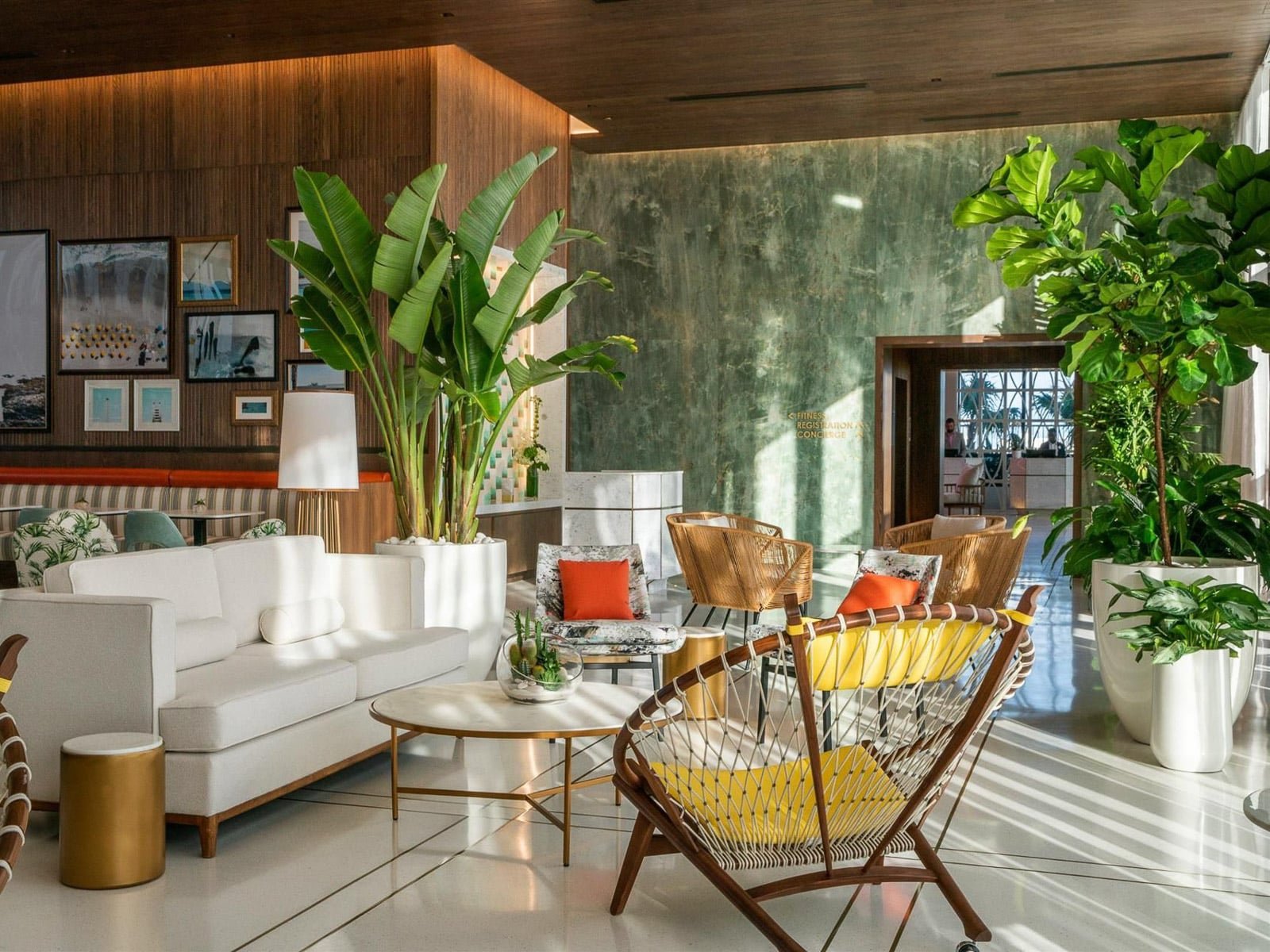When was the last time you went on a trek in the woods? You most likely experienced joy and peace. What if we could recreate nature’s physical, psychological, and emotional impacts in our own homes?
The approach of creating an environment that is in perfect harmony with nature is known as biophilic design. The most significant benefit of biophilic décor is that it decreases stress, boosts creativity, and aids in the creation of a healthy atmosphere that promotes the well-being of those who live there. Given that the majority of us spend 90% of our time indoors, an increasing number of homeowners and interior designers are applying these ideas to create direct and indirect connections with nature.
Read on to learn more about Biophilic interior design and 6 ways to bring the natural world into your home biophilic interior design.
Contents
What Is Biophilic Interior Design?

Biophilia is defined as a love of nature shown via greenery and natural components in constructed environments. Air quality, airflow, circadian rhythm, heart rate, and overall human health are all improved by biophilic design elements. Incorporating biophilic designs with indoor plants and natural patterns enriches the multi-sensory experience and encourages visual connection.
Natural systems and the presence of water are biophilic design concepts. Plants, sunlight, natural materials, and fresh air are all included in biophilic designs.
Frank Lloyd Wright, one of the greatest architects of all time, once stated: “Study nature, love nature, stay close to nature. It will never fail you.” This ideology was turned into structures that were in harmony with humans and the environment, which he named “organic architecture.”
This organic and nature-inspired design philosophy gradually developed into a movement, and biophilic design was formed. Biophilic design is defined as “an approach that fosters beneficial contact between people and nature in modern buildings and landscapes” by Stephen R. Kellert, author of “Biophilic Design: The Theory, Science, and Practice of Bringing Buildings to Life.“
The Benefits Of Biophilic Interior Design
The advantages of biophilic design extend well beyond aesthetics! It has a physiological effect on our bodies and brains, improving cognitive function and psychological well-being while also supporting general health.
Interiors that feature biophilic principles can have the following benefits for their occupants:
Improved Mood And Emotional Regulation
Customers and other visitors will benefit from biophilic design in your house or office. Incorporating only a few natural components into your home will lower cortisol levels, the stress hormone, resulting in reduced anxiety, rage, and overall mental disturbance.
Increase Overall Well-being
Exposure to biophilic features in places where we spend a lot of time each day can have long-term physiological benefits, such as decreased blood pressure. Improving air quality can also lower the incidence of consequences from lung diseases.
Reduce Indoor Pollutants
NASA-funded research found that plants lower levels of some indoor pollutants and can elevate relative humidity to healthier and more pleasant levels indoors.
Learn about: The 5 Indoor Plants that Clean the Air and Remove Toxins: Boost Your Health Now!
Boost Your Motivation
Natural light has been shown to promote productivity and Vitamin D absorption – the NHS recommends going for walks during the day to experience sunlight as a way to combat Seasonal Affective Disorder.
Studies have also shown that offices with more plants enhance productivity, implying that our connection to nature might encourage us.
Related article: How To Incorporate Biophilic Office Design Elements Into Your Office Space
6 Key Biophilic Design Principles

The Natural Environment
The natural environment focuses on natural world elements brought into an office setting. Simple things like earthy hues, sunlight, greenery, and animal and nature imagery.
Natural Shapes
Natural shapes are lines and shapes seen in nature. Arches and vaults are notable examples, as are re-creating rock shelves, stream pathways, and other natural phenomena.
Natural Patterns
Natural patterns, like natural shapes, deal with natural patterns and processes. This might be demonstrated through the erosion of rock over time, the development of vegetation, and the use of rhythm and scale.
Natural Light
Sunlight is beneficial, and biophilic design prioritizes light and space. Using components of warmth and diverse forms, light helps to blend the interior and outdoors.
Plants
What’s a natural design without plants? This does not imply that you have to turn your home or office into a jungle. Real plants, images, or plant hues can all be emphasized. The goal is to establish a bond between the interior and the natural features it incorporates.
Learn how to use plants in interior design.
The Human-nature Relationship
The last component includes re-creating the human-nature interaction. It is about re-establishing a bond that has existed for thousands of years. Biophilic design connects all of the above aspects. This allows an office to focus on certain themes such as order, safety, intricacy, curiosity, mastery, control, affection, exploration, discovery, and amazement. With ideas like this in mind, it’s simple to merge the modern with the timeless.
6 Ways To Bring The Natural World Into Your Interior Design

In essence, biophilic interior design is all about bringing nature closer to us by using flora, natural light, textures, and materials that have a positive impact on our daily lives, and the 6 ways to include the life of nature into every interior design are as follows:
Embrace Natural Light

Ample light balances our hormones and modulates our moods. It aids in the production of oxytocin (the feel-good hormone), which energizes your day and stimulates your creativity. By using more blinds than curtains, you may increase the amount of natural light in your house.
You may also clear the areas by removing obstacles from your window sills. Create a skylight to let more natural light into your areas. Also, remove heavy drapes from your windows and replace them with sheers that are lighter in color.
Floor lamps, candles, and scones can be used to replicate natural light and brighten one’s mood. Glass tables and mirrors can be used to offer more reflective surfaces. Spaces with windows might be a fantastic layout place for your reading nook as you get swept away by the marvels of Mother Nature from your hanging plants on the balcony.
Learn more about Buyers Guide To Rooftop Planters For Balconies, Roof Gardens & Landscaped Terraces
Go For Natural Color Schemes

One of the most basic ways to create biophilic interiors is to use a color palette inspired by nature. It’s crucial to note, though, that a natural color palette isn’t confined to earthy tones and rich greens. In fact, you have a spectrum of colors at your disposal.
If you’re having problems deciding on a color scheme, consider your favorite natural environment. Perhaps it’s the beach, with its soothing beige and blue tones. Consider the ever-changing colors of the sky, which range from blue to pink to grey and everything in between. Consider the desert, which has sandy, warmer hues.
Indulge In Green Room Schemes

Unsurprisingly, the biophilic design supports green in all of its manifestations, whether it’s decorating with plants or utilizing green paint.
Interestingly, even if you don’t want house plants in your home, just glancing at the color green has been shown to be beneficial; research discovered that green lowers our heart rate.
Green walls, furnishings, or a combination of the two will create a calming space that mimics the benefits of being outside.
Learn more about A Simple Guide To Interior Landscape Design
Install Living Walls
The indoor wall garden is a common component of biophilic design. Green walls are vertical gardens that can be put indoors or outside in interior design. They are generally constructed of modular panels containing soil and plants.
The plants used for a living wall must be tolerant of growing in close proximity to one another and in a restricted amount of soil. Plants that work well with green wall designs include creeping figs, pothos, and philodendrons. Reindeer moss is a low-maintenance solution for green wall interior walls that may be utilized to create distinctive patterns without the need for sunshine or water.
Incorporating living walls into interior design offers a number of benefits, including improved air quality, lower noise levels, and increased visual interest.
Decorate With Natural Elements

Biophilic design can also appear in less literal ways. Aside from decorating with actual plants, you may generate a similar impact by filling your house with textures, colors, and forms that mimic those found in nature.
Choose materials that are reminiscent of the outdoors, such as wood, leather, and stone, and color schemes that are subdued and organic. Incorporating modest allusions to nature in your décor is an easy and often affordable approach to promoting the relaxing properties of biophilic design.
Go Wild With Lots Of Potted Plants

Plants play an important role in biophilic interior design, and there are many good reasons to add plants to interiors!
Plants not only add natural beauty to indoor environments, but they also have various health advantages. They can assist improve air quality by eliminating pollutants and raising oxygen levels, as well as lower tension and anxiety, promote productivity and creativity, and even improve general happiness and well-being.
Adding greenery into interior spaces opens a whole world of choices and possibilities. In particular, potted plants are not just decorative and can serve a number of functions in interior spaces, such as:
- Dividing the space
- Adding a layer of texture
- Creating a focal point
- Highlighting distinctive features
- Changing the perceived scale
Learn more about: Interior Decorating Trends with Planters: Experts Discuss The Latest Plant Pot Trends
FAQs About Biophilic Interior Design
How can biophilic design be used to improve sustainability?
Biophilic design’s sustainability feature is critical for living buildings and habitats. Creating green areas, water features, plants, and natural materials has a variety of advantages, including lowering a development’s carbon footprint and moderating building temperatures.
What is the difference between biophilia and biophilic design?
Biophilia is the fundamental bond between humans and other living things, whereas Biophilic Design is how designers play on this notion by incorporating natural aspects into a space to make it more appealing and resonant with the senses.
Jay Scotts Featured Projects
See Our Planters Make A Difference
Learn how Jay Scotts planters are used to meet the goals of our customers – from the Philadelphia International Airport to the Gates Hotel South Beach in Miami.

Put The Finishing Touches To Your Biophilic Interior Design With The Jay Scotts Collection
Biophilic design starts with the right mindset and a willingness to improve our connection with nature. Incorporating it into our living and working environments is relatively easy.
In biophilic interior design, planters also play a crucial role in bringing nature indoors and creating a connection between people and the natural environment. Planters also provide an opportunity for creative expression and can be used to enhance the aesthetic appeal of a space.
If you’re now looking to add planters to your biophilic interior design, then you’re in the right place! Here at Jay Scotts, we provide the best fiberglass planters to complement the beauty of your interior design.
Our plant pots come in a variety of shapes, sizes, and 20 colors of your choice, allowing for customization to fit the specific needs and style of a design project. They look great in both indoor and outdoor settings and can withstand extreme temperatures since they are constructed of the strongest fiberglass materials available.
All of our planters come with an industry-leading guarantee, underlining the dedication and value of our fiberglass planters.
If you’re looking for gorgeous pots for these exquisite plants, simply visit our online store and liven up your biophilic interior space!
